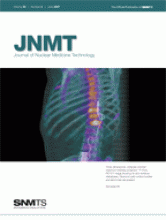Abstract
Obesity has reached epidemic proportions in the United States; hence, it is frequently encountered in patients undergoing 18F-FDG PET studies. The purpose of the current study was to present a technologist's perspective on the prevalence of obesity and the challenges and solutions in imaging obese patients in our PET facility. Methods: From October 2002 to October 2003, whole-body 18F-FDG PET was performed on 1,164 patients with a known or suspected malignancy. Images were acquired 45–60 min after 18F-FDG injection (7.4 MBq [0.2 mCi]/kg, with a maximum of 925 MBq [25 mCi]) on a PET scanner using a 4-min emission and 3-min transmission time per bed position. A database was maintained of patient height and weight, and body mass index (BMI) was calculated. Patient obesity was classified as overweight (BMI ≥ 25 kg/m2), obese (BMI ≥ 30 kg/m2), or malignantly obese (BMI ≥ 40 kg/m2). In addition, PET technologists recorded any problems and attempted solutions related to the patient weight. Results: BMI calculations showed that 528 patients (45.4%) were overweight or obese (322 men and 206 women; mean age, 55 y). Of those, 201 (38%) were overweight, 270 (51%) were obese, and 57 (11%) were malignantly obese. Problems encountered in these patients included difficult intravenous access (15%), difficult patient positioning (10%), patient motion (7%), an incomplete study (emission only) (1%), and potentially higher radiation exposure to the technologist because of extra time spent near the patient. Attempted solutions included adjusting the schedule to allow more time per patient, adjusting the dose based on body weight, using varied positioning techniques, dividing the study to allow a respite between different image combinations, and dividing time spent with obese patients among the technologists involved. Conclusion: Excessive body weight and related problems have commonly been encountered in our PET facility. 18F-FDG PET studies of obese patients represent an ongoing challenge, which requires patient-tailored solutions to avoid compromising image quality and risking higher radiation exposure to the technologists.







